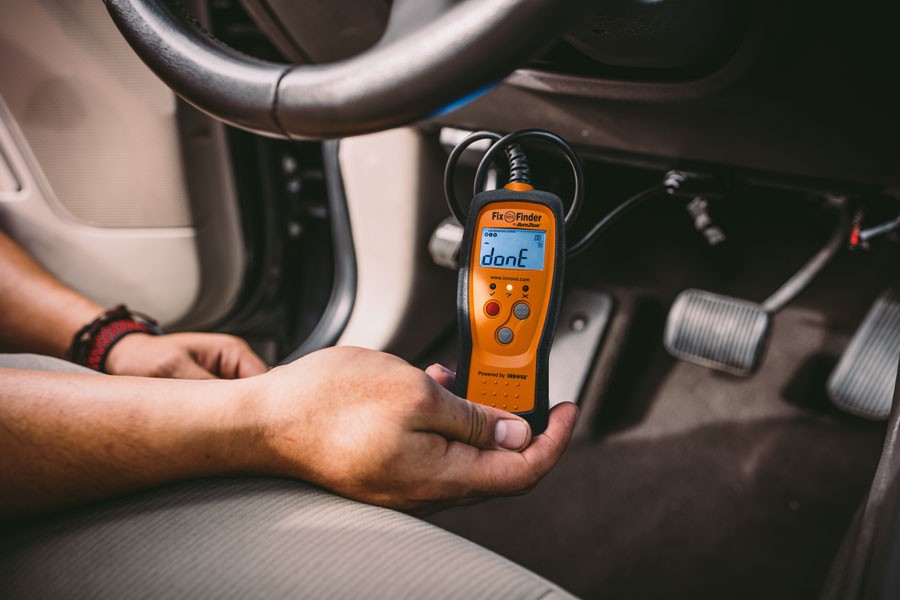Connecting an OBD2 code reader is the first step in diagnosing car problems. This guide provides a clear, step-by-step process on locating the OBD2 port and properly connecting your code reader.
Locating the OBD2 Port
The OBD2 port, a 16-pin trapezoidal connector, is typically located under the driver’s side dashboard. It might be hidden beneath a panel, in the center console, or less commonly, under the passenger side dash. Its standardized design ensures compatibility with most OBD2 scanners.
Connecting the OBD2 Scanner
Connecting the scanner is straightforward:
- Turn Off Ignition: Ensure your car’s ignition is completely off before starting.
- Align and Connect: Match the trapezoidal shape of the scanner’s connector to the OBD2 port. Gently but firmly push them together until securely connected. A slight wiggle might be necessary.
- Turn Ignition On: Turn the ignition key to the “on” position, but do not start the engine. This powers up the OBD2 port and the scanner.
- Wait for Boot-up: Allow the scanner to complete its boot sequence and initialize. You may need to input vehicle information like VIN or engine size.
Understanding OBD2 Scanner Menus
Once booted, the scanner’s menu will display various options depending on the device’s complexity:
- Read Codes: Displays Diagnostic Trouble Codes (DTCs) indicating potential issues.
- Erase Codes: Clears stored DTCs after repairs are completed.
- Live Data: Provides real-time sensor readings for advanced diagnostics.
- Freeze Frame: Captures vehicle data at the moment a DTC was triggered.
- Vehicle Info: Displays vehicle-specific information.
- I/M Readiness: Shows emissions-related readiness status for smog checks.
Deciphering OBD2 Codes
DTCs follow a specific format: one letter followed by four numbers (e.g., P0301).
- Letter: Indicates the affected system (P: Powertrain, B: Body, C: Chassis, U: Network).
- First Number: 0 denotes a generic code; 1 signifies a manufacturer-specific code.
- Remaining Numbers: Pinpoint the specific system and fault.
For example, P0301 signifies a generic powertrain code related to a cylinder 1 misfire.
Using OBD2 Scanners for Cost Savings
OBD2 scanners empower car owners to:
- Diagnose Issues: Identify potential problems indicated by the Check Engine light.
- Prepare for Smog Checks: Verify I/M readiness for emissions testing.
- Perform DIY Repairs: Diagnose and fix simple issues without professional help, saving on diagnostic and repair costs. For instance, a P0138 code points to a faulty oxygen sensor, a relatively easy DIY replacement.
Conclusion
Knowing where to plug in an OBD2 code reader and how to interpret the data is invaluable for car maintenance. This knowledge allows for quicker diagnosis, informed repair decisions, and potential cost savings. With a basic understanding of OBD2 systems, car owners can take a more proactive role in maintaining their vehicles.
